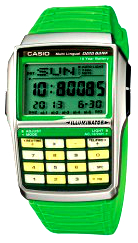Smart watches trained on illness
 Smart watches could soon be used to predict illnesses before their wearer knows they are coming.
Smart watches could soon be used to predict illnesses before their wearer knows they are coming.
By following 60 people through their everyday lives, Stanford researchers have found that smart watches and other personal biosensors can flag when people have colds and even signal the onset of complex conditions like Lyme disease and diabetes.
A team led by Dr Michael Snyder, the head of genetics at Stanford, used wearable devices to collect a myriad of measurements from participants for up to two years.
They were able to detect deviations from their normal baseline for measurements such as heart rate and skin temperature, which can be early sign of illness.
Because the devices continuously measure important health parameters, they could provide rapid means to detect the onset of diseases that change physiology.
In studies so far, the team has observed deviations in key characteristics coinciding with times when people became ill.
Heart rate and skin temperature tends to rise when people become ill, leading the team to write a software program for data from a smart watch called ‘Change of Heart’, which can detect these deviations.
The devices were also able to detect common colds and even Lyme disease in one case – that patient being Dr Snyder himself, who participated in the study.
“I had elevated heart rate and decreased oxygen at the start of my vacation and knew something was not quite right,” he said.
After having a low-grade fever for several days, he visited a physician who confirmed the illness. Dr Snyder then took the antibiotic doxycycline and the symptoms disappeared, but subsequent tests were able to confirm the presence of Lyme.
Dr Snyder says the smart watch and an oxygen sensor were useful in detecting the earliest signs of illness.
Researchers envision using smart phones, watches and other devices as a complete health dashboard, monitoring health and sensing early signs of illness, sometimes even before the person wearing it does.







 Print
Print